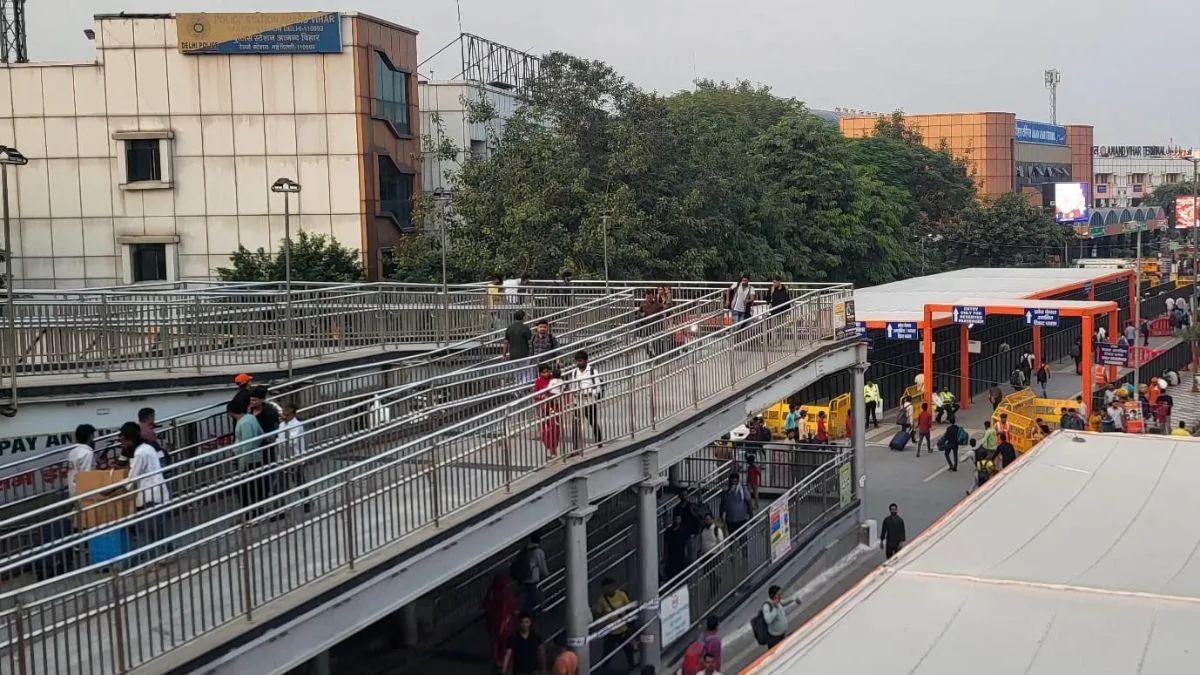- By Akansha Pandey
- Fri, 24 Oct 2025 11:48 AM (IST)
- Source:Jagran News Network
A study by RITES on passenger arrival patterns at Anand Vihar railway station has found that 64 per cent of passengers use the foot-over-bridge (FOB) connected to the metro station and bus stand. However, they face difficulties due to its winding ramp, which requires them to walk about 550 metres.
Based on this study, RITES has proposed changes to make movement via the foot-over-bridge easier. The study, which revealed that 53 per cent of passengers arrive by metro and 11 per cent by bus, noted that these passengers currently face difficulty on the winding, ramp-only structure, which has no stairs or escalator.
To address this, RITES has proposed changing the FOB's structure. The plan includes building a straight ramp towards the staff parking area, where a passenger waiting area is also proposed to be constructed. In place of the existing ramp, the proposal recommends installing stairs on one side and an escalator (for both ascending and descending) on the other. According to sources, the Railways has approved this proposal and may soon move forward with the work.
Proposals For Vehicle Passengers
The study found that 34 per cent of passengers arrive at the station by auto-rickshaw, e-rickshaw, and taxi. For this group, RITES proposes that the central part of the railway station premises be reserved only for emergency, car, taxi, and auto-rickshaw lanes, removing the existing parking from that area. This change is intended to ensure passengers using these modes of transport do not face trouble alighting or boarding.
Only two per cent of passengers arrive in private vehicles. The study proposes building a new car park along the drain for them, creating separate parking for two-wheelers and cars. Additionally, it suggests building a new exit route over the drain for vehicles.
Passenger Demographics
The RITES survey also provided a profile of the station's users, revealing that most people who travel from Anand Vihar are working professionals. The data showed that 71 per cent of those boarding trains are working people, 21 per cent are business people, 6 per cent are students, and 2 per cent fall into other categories.
Also Read: Bihar Election Buzz Hits Delhi: Purvanchali Voters Debate Key Issues
Among these passengers, 55 per cent are aged 18 to 25, and 39 per cent are aged 26 to 40, with the rest belonging to other age groups.
Also Read: MCD Withholds Salary For Protesting DBC Staff; Plans 1,000 New Hires For Chhath Puja

